In April 1951, The Louisiana Weekly included a snapshot of Mrs. Sarah Hébert Brown, who was then aged ninety-three years old, and her daughter, granddaughter, great-granddaughter, and great-great-grandson. The picture was included as a simple human-interest piece, centered around the fact that Mrs. Brown, a native of Vacherie, lived to see five generations of her family and still went to Mass alone and did her own housework. The Louisiana Weekly would not have known that the Brown family’s roots were to be found on the now well-known Laura Plantation.
The antebellum and postbellum histories of the Brown family and other families who were enslaved at Laura are now on display in a new exhibition at the plantation, which is located on the west bank of the Mississippi River about fifty miles above New Orleans. For over twenty years, Norman and Sand Marmillion, the current owners of Laura, have sought to preserve and interpret the history of the inhabitants of the plantation, irrespective of the color line. Uniquely, Laura is one of the few plantation homes along the River Road which seeks to present le monde créole, the world of Creole Louisiana.
Laura Plantation was originally called l’habitation Duparc, after Guillaume Duparc (1752-1808), the French-born patriot of the American Revolution, who is the progenitor of the four successive generations of Duparcs and Locouls who owned Laura until 1891. In addition to the Duparcs and the Locouls, Laura was inhabited and worked by just as many generations of enslaved people of West African descent. By the Civil War, the enslaved population at Laura numbered one hundred and eighty-six people.
These individuals, ‘human property,’ were just as valuable and to a degree more valuable than the land they worked. They were bought, sold, mortgaged, and inherited, much like the land, the chattel, and the farming implements. They were first and foremost human beings – who were born, who fell sick, who gained and transmitted skills and culture, who formed relationships, had children, and died. In the new exhibit, the Marmillions, with the invaluable assistance of historians Katy Shannon and Randall Schexnayder, have captured the lives of the enslaved people and put it on display through documentary, photographic, and tactile evidence.
The information amassed on the families at Laura are a genealogist’s goldmine and are an example of the narratives which can be woven through exhaustive research. The Archives of the Diocese of Baton Rouge, for example, include baptismal registers for Saint James Catholic Church and Notre-Dame de la Paix in Vacherie, which have thousands of entries for enslaved and free black people who received the sacrament of baptism in the decades before and after the Civil War. These sacramental records – of baptisms, marriages, and interments – are an invaluable resource and one unique to heavily Catholic areas, such as Louisiana.
Much like a car or house today, there were accurate records kept of the transfers of slaves through sales, donations, and successions. These records were drawn up by notaries and parish clerks and deposited in the various parish courthouses. An example of such an act is one dated 1 May 1845 by Théodore Guyol, a notary in New Orleans, who recorded the sale of three eighteen-year-old negresses named Jane, Louisa, and Anne from the slave trader Mark Davis to Guillaume “Flagy” Duparc, for $570.00 each.
Anne would later have two sons with another enslaved person at Laura, who was called “Big Anthony,” and after the War was known as Anthony Brown. Anthony came from Northampton County, North Carolina, where he was owned by Frances E. Williamson. He was later brought to Louisiana by the noted slave trader, Bacon Tait. One of the two sons born to Anthony Brown and Anne was Alfred Brown (b. circa 1858 – d. 6 May 1942), who was the husband of Mrs. Sarah Hébert Brown, and the patriarch of the five generations pictured in The Louisiana Weekly.
Fortunately, for their descendants and for the visitors who come to Laura from around the world, the story of Big Anthony and Anne and the hundreds of other lives entangled with the history of the plantation are chronicled in the panels included in the exhibition.
In addition to sacramental entries, conveyance records, and estate inventories, there are runaway slave advertisements, narrative accounts from former slaves, and quite interestingly, Civil War Pension Applications. These pension files, kept at the National Archives in Maryland, include interviews with former slaves by examiners for the purpose of clarifying information on such issues as military service, identity, health and disability, marital and family relationships, employment, economic circumstances, and ownership before the War. In the depositions echo the voices of former slaves, allowing them the opportunity to talk about their lives and how they saw the world.
Overall, the permanent exhibition has been divided into subject headings including farm labor, domestic labor, religion, wartime service, health and medicine, etc., all of which help to paint a picture of the vibrant yet bound lives whose histories are a part of Laura Plantation.
After the Civil War, Alfred Brown, the son of Anthony Brown and Anne, married Sarah Hébert. They raised their large family (Amelia, Ernest, Willie, Elodie, Lillian, Cordelia, James, Angelina, Charles, and St.-Elia) in Vacherie. They were members of Saint Phillip Catholic Church. It was there, that on 14 April 1877, their oldest child, Marie Amelia Brown (born 20 March 1877) was baptized. Amelia married William Stevens on 6 February 1895 at Saint Philip’s. William Stevens was born on 12 March 1872 to Adam Stevens and Marie Julie Frederique/Hymel. He worked in a saw mill for the duration of his career. William and Amelia had nine children, including Elvina Stevens (Mrs. Warren Levi) Ellis, who is pictured along her daughter, Marilyn Ellis (Mrs. Edward) Dalcourt, and grandson, Michael Kenneth Dalcourt.
Having been present during a special showing for historians and the media, we were able to review each part of the exhibit in detail and to speak at length with the Marmillions, Katy Shannon (whom we first met ‘in the archives’), and fellow genealogist, Randall Schexnayder. Katy is passionate about uncovering the stories behind these River Road families and Randall was almost moved to tears to see the ancestors of so many friends and relatives from his hometown of Vacherie being preserved. Randall assisted in collecting oral history and artifacts from many of the descendants.
It is said that our ancestors only truly die when their names are no longer spoken and their memories are forgotten. The names are spoken at Laura, they have been culled from the pages of old volumes, and the history and memory are kept alive.
Sources: The Louisiana Weekly, 21 April 1951, page 8; Photographs of “From the Big House to the Quarters: Slavery on Laura Plantation.”
Jari C. Honora
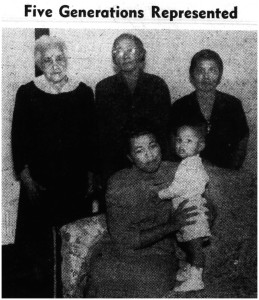
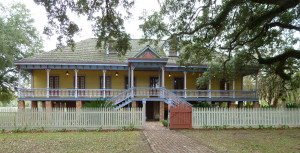
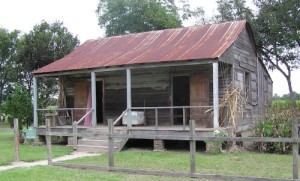
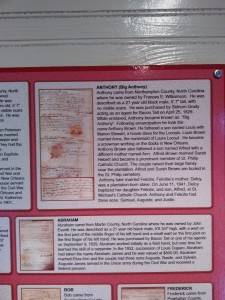
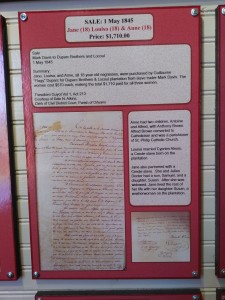



Thank you Jari. Great article — but you give me way too much credit. I only assisted Katy in certain ways and was glad to do so. I get to check off a bucket list item to see this start to come around — been eyeing that plantation since I was 12 years old, and just knew there were stories there.
Thank you for whetting my historical appetite! I can not wait to visit Laura Plantation, The Catholic Church was not perfect about slavery but, they kept good records. This enabled many of the Creoles to trace their roots!
I would really like to speak with you. You may not remember (I am a Domio/Domino). You mentioned that you knew my Daughter n la, Maureen Ancar Angel. If possible please let me know. It is of course about my tree. Thanks
I’m from Vacherie La
No, the Catholic Church colluded a lot in slavery, but everyone can stop the collusion today. It is just and right to remember the names of those wrongfully treated as “less than”…we must never forget.
A visit to Laura Plantation puts history into a wider view; I was fortunate enough to work as a guide at Laura, but that was in 1990s; it seems Norman and Sand are sensitive and take their work seriously to provide an honest history of Louisiana.
Amazing that Mrs. Brown, born in 1858, had her photograph taken in my lifetime. Yet another excellent post. Thank you to Creole Gen and Jari Christopher Honora for keeping our history alive!
How exciting to see this picture again! Sarah Brown was my great grandmother and was alive when I was born. Her daughter Amelia Brown Stevens was my grandmother and Amelia’s son George Stevens was my father. He was one of nine children. As large as the family was we were and still are all very close. From that picture Marilyn, the mother, is alive and well and lives in Baton Rouge and Michael, the baby, is alive and well and lives in Los Angeles, CA.
Wow I wonder if we are related. I have a Marilyn Dalcourt in my family. I have been trying to find more on the Dalcourt family name
Hello…my name is Steven Mohr and George Stevens is my grandfather. Carolyn Stevens is his daughter. Please contact me when you get this.
I am in awe. Because of this info I started my genealogy of my family. Many of them lived on the Laura Plantation and Bessie Kay also. I always said my ancestors will never be forgotten “The drums still beat”
Doris, e-mail me (rschexna@xula.edu) and I can see if your family branch has been looked at already. (What is your family name at Laura? and BTW I have family from Bessie K too, but haven’t really gone that route yet. I think Champagnes and Ambroses)
Sarah Hebert Brown is my great, great grandmother. I have never seen this picture of her! Thanks for sharing. I have a pic of her in her younger days.
Sarah Brown is my great-great grandmother. My grandfather always said his family came from “The Laura.” Coincidentally, I worked at Laura as a tour guide and I now work for the Tourist Commission that represents them. Never imagined I would see my history on display like this. Thankful to Laura Plantation for the recognition.
THANK YOU CREOLE GEN & ALL RESEARCHERS. Every story is enlightening and very much appreciated by the families involved and by the community at large. Our history is so rich and is the DNA of America.
Great job and never stop!
Thank you for the article, it’s always wonderful to learn history even if it’s not the best…one thing to mention is that the Catholic Church married slaves despite and during that time, that was in some areas illegal… great information
Tracing history is always good, Fr. Donald Hebert compiled records in Acadiana now in books & CD.
I am researching my mother’s family history from Vacherie and am in desperate need of assistance in learning more about my grandmother Albertha Monroe. She was married to Joseph (Pleasant) Hensley around 1918 and her parents were Milton Monroe and Rina Jackson. I know they stayed in Vacherie until my mother was born there in 1925 and for years after. I don’t live in the area and wondered if there is any information online or anyone who has more information on the slaves living on the Laura or other plantations in that area from the Civil War time. Any assistance or advice is appreciated!
Hi I’m Brittany Jeffery. Great-Granddaughter of Alfred Stevens(Son of William Stevens and Amelia Brown). Can you email me? Thanks
My name is Brian Tucker, I live in Chicago, IL. My grandfather, Charles Brown was one of Alfred and Sarah Hebert’s children. I remember my grandfather spoke of his sister Amelia and his youngest sister whom we called Sentilia and who is listed in the article as St.-Elia. My mother, Janet Brown-Tucker, was one of Charles and Olivia Priestley’s 3 children, Janet, Vernon and Charles Jr. I have 6 siblings. It is a tree with many branches indeed. I loved the article, Thank you so much..
This a strange request but is there any record of a female slave named *Tissie* or possibly *Tessie*? She would have died sometime before 1905. Thank you very much. Lynn Hurst